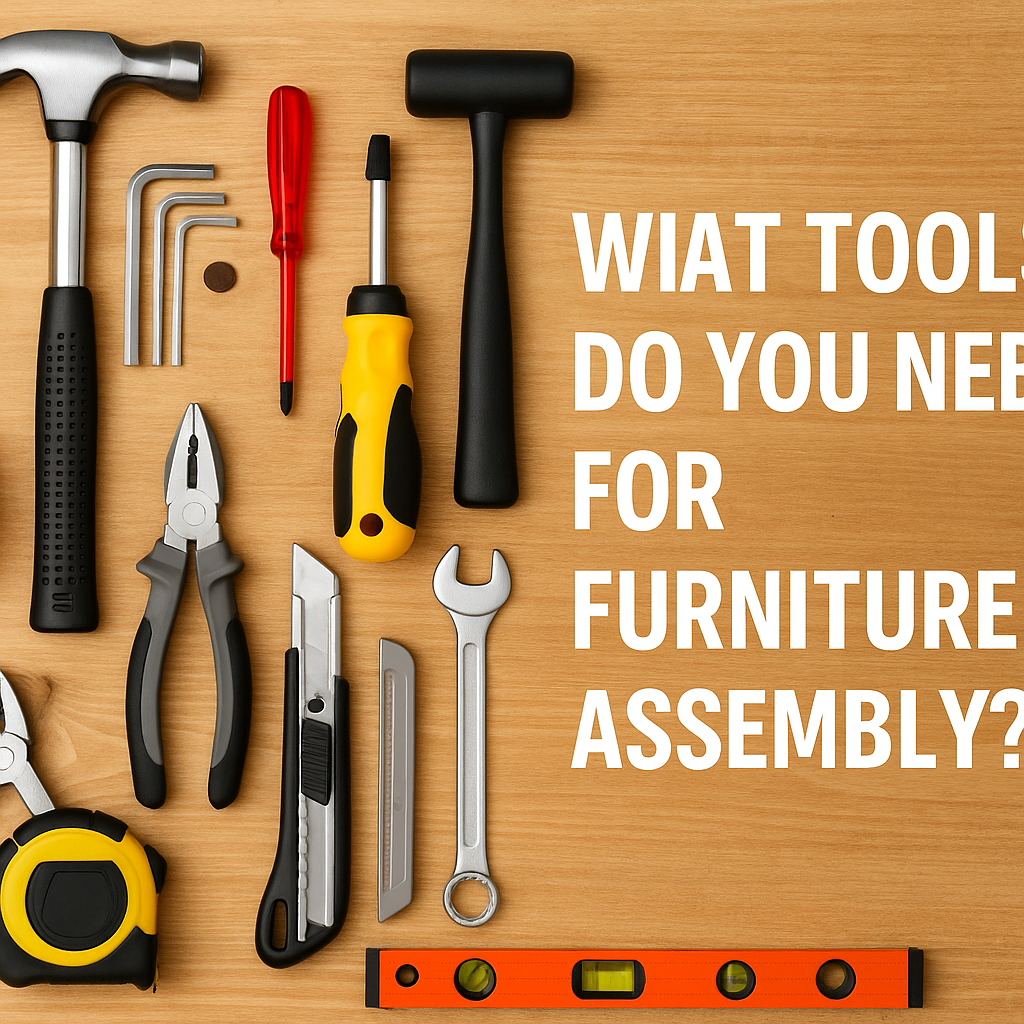
Assembling furniture can feel like solving a 3D puzzle — exciting for some, frustrating for others. Whether you’re putting together a wardrobe, desk, bed frame, or modular shelf, having the right tools makes all the difference. In this guide, we’ll explore the essential tools needed for furniture assembly, along with some tips to make the process smoother and more efficient.
This article is designed for homeowners, renters, DIY enthusiasts, and anyone curious about what goes into building furniture at home.
🧰 Why Tools Matter in Furniture Assembly
Most flat-pack or ready-to-assemble furniture comes with instructions and sometimes even basic tools like an Allen key. However, relying solely on what’s provided can slow you down and may not be suitable for larger or more complex pieces.
With the right tools, you can:
- Assemble pieces faster
- Ensure tighter and safer fittings
- Avoid damaging parts
- Work more comfortably
🔧 Essential Tools for Furniture Assembly
Let’s look at the basic toolkit that every home should have for furniture assembly:
1. Screwdriver Set (Manual and Electric)
Most furniture requires screws to hold panels, shelves, and brackets in place.
- Manual Screwdrivers: A good set of flathead and Phillips-head screwdrivers is a must. They help in precision and offer better control in tight spaces.
- Electric Screwdriver or Drill: Speeds up the process significantly, especially for large furniture. Make sure to adjust the torque to avoid overtightening.
Pro Tip: Choose a screwdriver with a magnetic tip — it holds the screw in place and reduces frustration.
2. Allen Wrench / Hex Key Set
Flat-pack furniture often comes with a single Allen key, but it’s usually small and uncomfortable to use for long periods.
- A full hex key set with handles or an L-shaped grip makes assembly much easier and faster.
- Consider a multi-bit tool that includes hex heads and can be used with your electric drill.
3. Rubber Mallet
Unlike a hammer, a rubber mallet doesn’t damage the furniture surface when you need to gently tap parts into place — like fitting dowels, joints, or panels.
It’s especially useful for assembling wardrobes, wooden frames, and drawer cabinets.
4. Tape Measure
Accuracy matters in furniture assembly. A tape measure ensures you’re aligning shelves evenly, keeping spacing consistent, and placing pieces in the correct location.
Measure twice, drill once!
5. Spirit Level (Bubble Level)
Want a straight table or properly aligned wall shelf?
A spirit level helps you check if your assembled furniture is even — both horizontally and vertically. This is essential for bookshelves, wall units, cabinets, and anything fixed to the wall.
6. Hammer (with Claw)
A traditional claw hammer is helpful when dealing with nails, tacks, or small construction adjustments. Use caution with delicate surfaces — a rubber mallet is better in such cases.
7. Pliers
Pliers can be used to:
- Pull out misaligned nails
- Hold bolts tightly
- Twist small pieces into place
- Fix alignment issues
Keep a needle-nose plier and a standard grip plier in your toolbox.
8. Utility Knife or Box Cutter
A sharp utility knife is useful for:
- Opening boxes
- Cutting zip ties or plastic wraps
- Trimming packaging or protective edges
Always use a cutting mat or flat surface to avoid damage while cutting.
🪑 Optional but Helpful Tools
If you’re serious about assembling multiple furniture items, consider these additions:
- Cordless Drill with Bit Set – For complex or heavy-duty assembly
- Workbench or Assembly Mat – Protects the floor and furniture
- Clamp Set – Holds parts in place when you’re working alone
- Work Gloves – Prevents splinters and offers better grip
- Furniture Sliders – Makes it easy to move heavy furniture across rooms
⚙️ Safety Tips During Assembly
- Read the manual first – Even if it seems simple. Understanding the order of steps prevents mistakes.
- Lay everything out – Organize all parts and tools before you start.
- Use soft padding – To prevent scratches on flooring or tabletops.
- Check for missing parts – Before you begin, to avoid frustration mid-way.
- Avoid overtightening screws – This can crack the wood or damage the furniture.
🧩 Furniture Assembly Complete Guide Final Thoughts
Furniture assembly is much easier when you’re equipped with the right tools and a little patience. Whether you’re moving into a new home, upgrading your living space, or setting up an office, a basic furniture assembly toolkit will save time, stress, and potentially even money.
You don’t have to be a professional carpenter to do it right — just be organized, careful, and use tools that give you an edge.
Happy assembling!
If you are still unable to do the assembly, then you can talk to us on a video call; we will take our expert online and help you, but you will have to pay the charge for it
